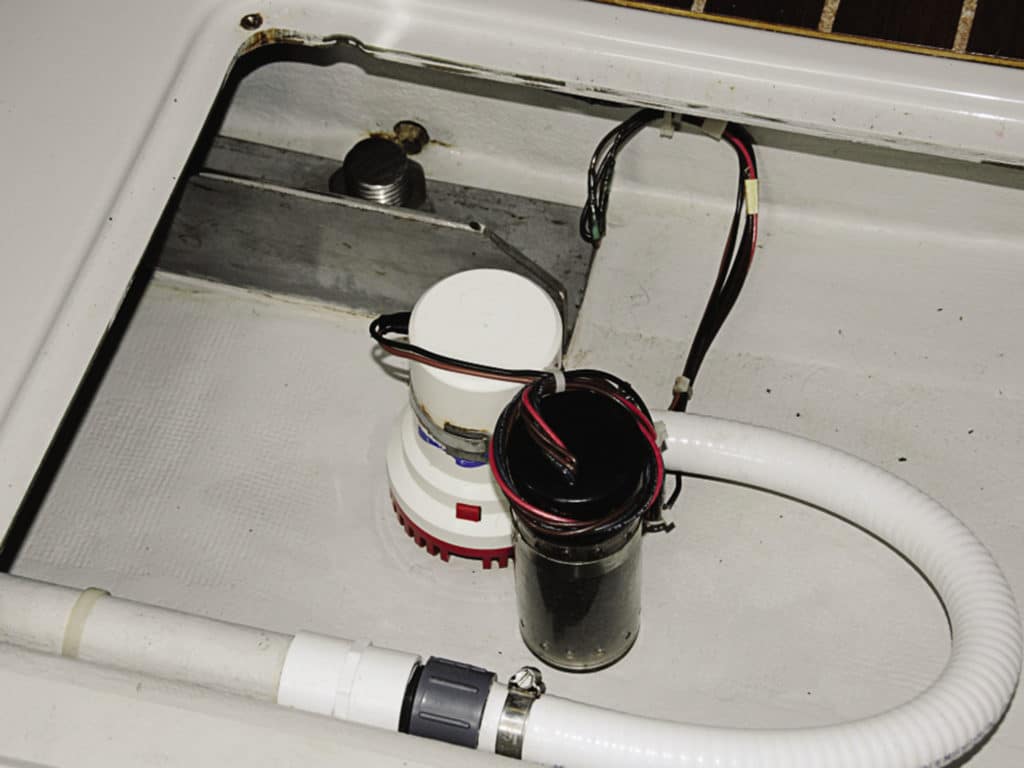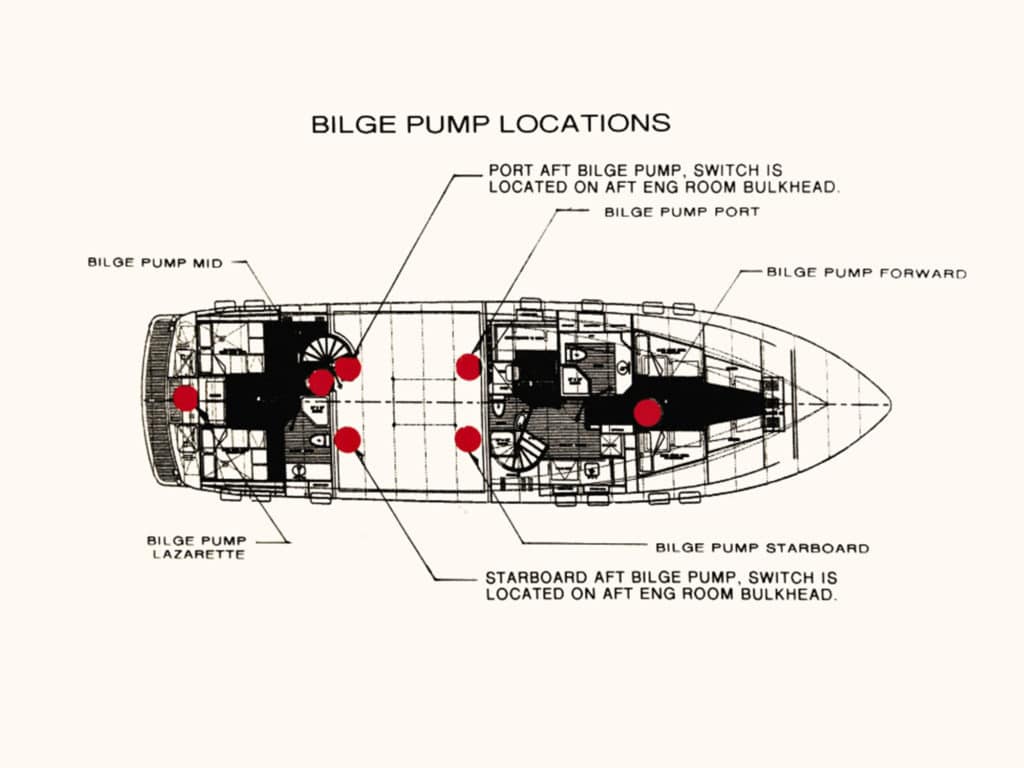
In 2017, a story about the sinking of a 56-foot center-cockpit sloop made the rounds in the sailing community. On a race from Antigua to Bermuda, the crew of the “diligently maintained” Monterey abandoned the boat, and were soon rescued from a life raft, after hearing a “sharp cracking or bang” just four hours earlier. I read it with great interest, and like every tale of a foundering, I reflected on the lessons that could be learned.
High-Water Alarm
Several details struck me, the most important being the high-water alarm, if present, didn’t sound (the first inkling of trouble was a flooded forward head). High-water alarms, a requirement for ABYC compliance, are one of the first lines of defense in such a scenario. Many of the alarm switches I encounter are located far too high; the intention of such an alarm is to give the crew as much notice as possible about water accumulation that is above “normal” (for some vessels, “normal” might be no water at all). Alarm switches should be mounted no more than 2 inches above bilge-pump float switches.
Additionally, whenever a bilge pump runs, it should be accompanied by the illumination of an indicator light, one that can be seen at the nav station as well as in the cockpit. Some vessels include an audible indicator as well—not necessarily an alarm, but a chirp or soft buzzer, something that will tell the crew the pump is running without waking the off watch.
Bilge-pump capacity is like fire extinguishers; you never can have too much. There should be a submersible pump in each bilge compartment, and overall capacity should be no less than 100 gallons per hour per overall foot of vessel length (i.e., a 45-foot vessel should have at least 4,500 gph worth of pump capacity). Pumps, float switches and high-water alarms can be properly tested by only one means: filling bilges with water and observing the results. This is because pumps that run do not necessarily pump water.

Seacocks
The crew of the stricken vessel searched for the source of the water ingress with no success, so they wisely shut all below-the-waterline seacocks. The owner had posted a diagram showing their locations; however, it was noted that the lettering was minuscule. Not only should this information be as clear as possible, each seacock and hull penetration on the chart should be clearly identified so it’s clear that none have been missed in an emergency scenario such as this.
If seacocks are located in less-than-obvious locations —under berths or in false bottoms in lockers—the exterior of those spaces should be clearly marked to indicate that a seacock is hidden within. Under no circumstance should it be necessary to use tools to access a seacock.

Damage Control
Bilges should be accessible for inspection. Hatches should be latched in place but not screwed down. Racing vessels often represent some measure of organized chaos below, with a lot of souls, their personal gear, the vessel’s gear and emergency gear layered into every available storage space. Nevertheless, an effort should be made to keep access to bilge spaces clear and reasonably accessible in a reasonably quick manner, and this includes keel fasteners.
If a vessel begins to take on water after striking an object, it stands to reason that the damage is forward—if not in the hull itself, then perhaps in a transducer. Regardless, if the ingress cannot be quickly identified, a fothering patch can buy time while the problem is dealt with. These are inexpensive and easy to use provided conditions are moderately calm; in this case, they were.
While the likelihood of such an event is thankfully low, it always pays to be prepared. Test your high-water alarm and pumps regularly, and make certain your damage-control kit includes a fothering patch.
Steve D’Antonio offers services for boat owners and buyers through Steve D’Antonio Marine Consulting.








